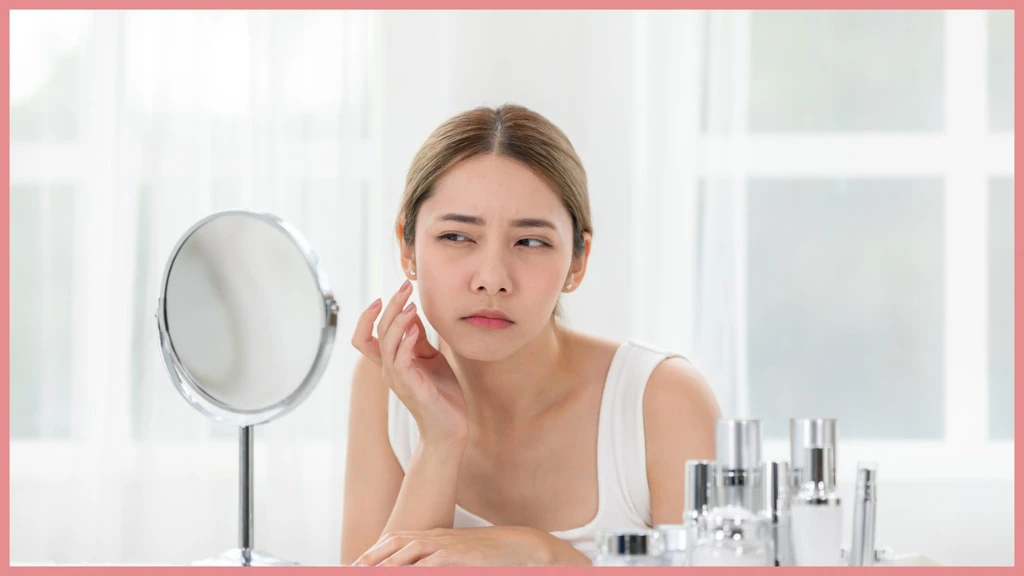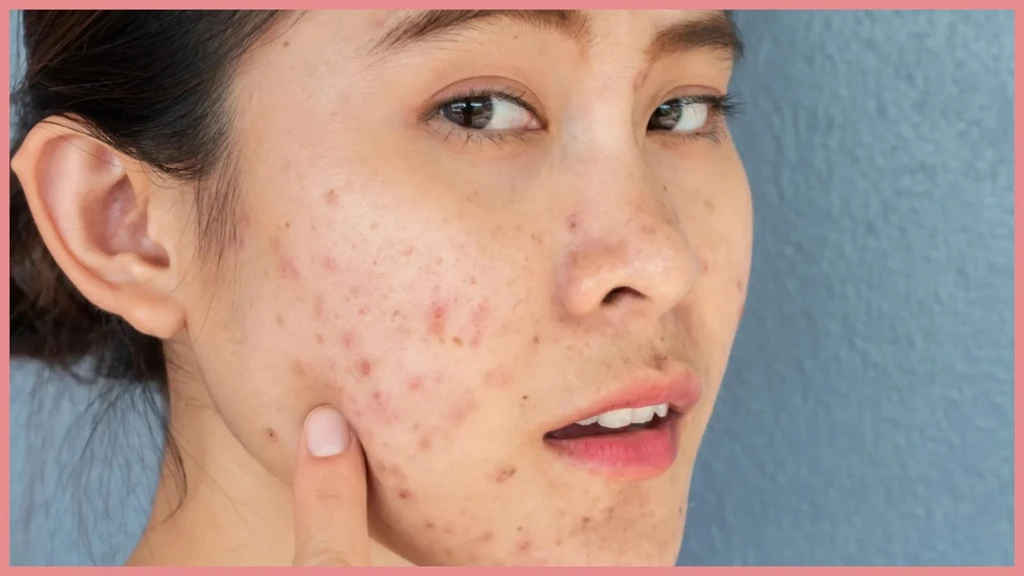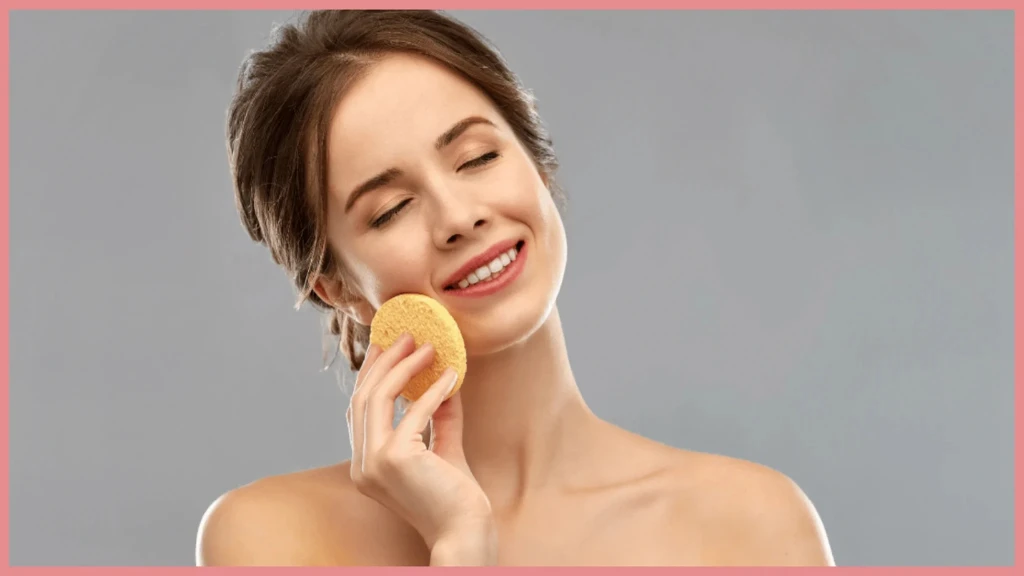How Pimples Actually Heal
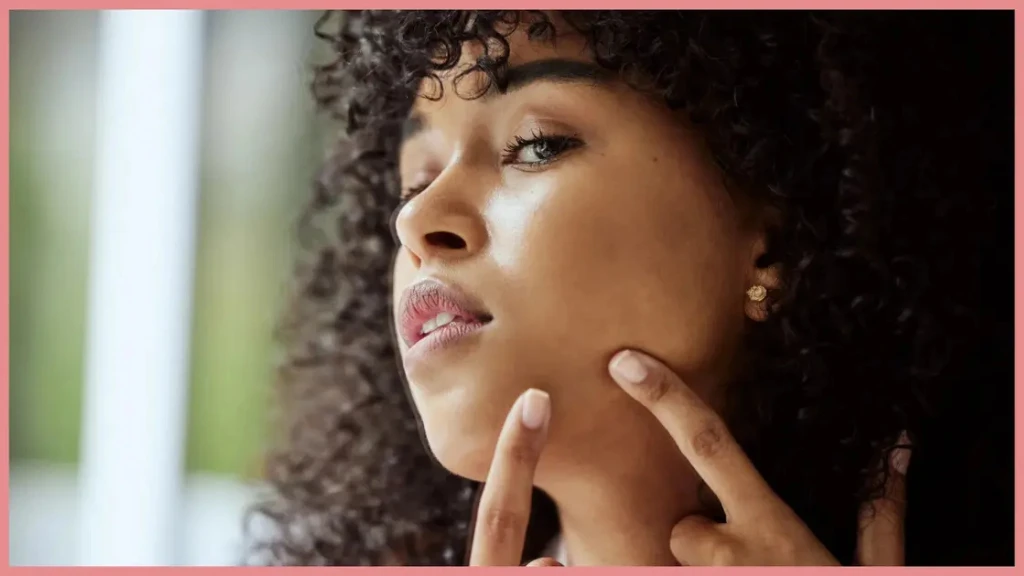
Tired of battling breakouts? Understanding the pimple healing journey is key to achieving clearer skin. Let’s explore the science behind how pimples form, how they heal, and what you can do to speed up the process.
Pimples are frustrating blemishes that I myself have dealt with at various times in life. Whether during puberty, in young adulthood, or going through menopause. It seems like they always show up when the delicate balance of your skin gets disrupted.
Excess oil, dead skin cells, and bacteria mix to clog pores, sparking inflammation. It’s a normal response, but knowing how to manage it can make all the difference in how your skin looks and feels.
Understanding the Pimple Healing Process
Stages of Pimple Healing
Healing a pimple is a step-by-step process, and every stage plays a role in your skin’s recovery.
Stage 1: Inflammation
When you first notice a pimple forming, it usually comes with redness, swelling, and tenderness.
This is your body’s immune system kicking into gear. White blood cells rush to the site, targeting bacteria and starting the repair process. It’s why the area might feel warm or tight.
During this stage, it’s important not to poke or prod the area. Irritating an inflamed pimple can make things worse, leading to prolonged healing or even scarring.
Stage 2: Pus Formation
If you’ve ever wondered why a pimple fills with pus, it’s because your body is defending itself. White blood cells work overtime to engulf bacteria, which creates pus. While it might look unappealing, this is a natural and necessary step in healing.
Stage 3: Pus Drainage
Once the pus has formed, it either drains naturally or needs a little help. Applying a warm compress can encourage the pimple to open and drain safely. However, avoid squeezing or forcing the process. Improper drainage techniques can push bacteria deeper into the skin, causing more harm than good.
Stage 4: Scar Formation
After the pimple drains, your skin begins the repair process. Collagen is produced to mend damaged tissue, but this can leave marks.
For those of us with darker skin tones like myself, hyperpigmentation is a common concern. Daily sunscreen use like Tower 28 Beauty SunnyDays SPF 30 Tinted Sunscreen Foundation from Amazon.com and treatments like vitamin C serums can help minimize dark spots and unevenness. Here's my recommendation of Ole Henrikson vitamin C serum from Amazon.com.
Stage 5: Scar Resolution
Scars and marks fade over time, though the speed depends on factors like your age, complexion, skin type, and overall health.
Some scars may require extra care, such as silicone sheets or prescription treatments. If a mark doesn’t fade or is especially bothersome, consider consulting a dermatologist.
The pimple healing process goes through several stages, from inflammation to scabbing. If you're dealing with persistent breakouts, check out how to get rid of sebaceous filaments safely and the common causes of enlarged pores.
Factors That Affect Pimple Healing Time
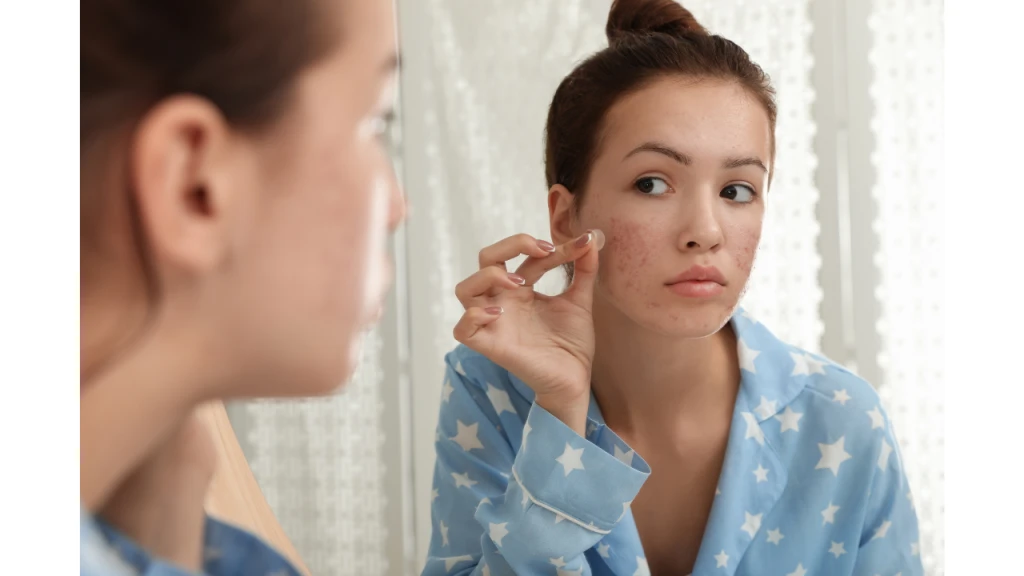
The time it takes for a pimple to heal depends on several factors. Understanding these can help you manage your expectations and focus on effective care.
Pimple Severity
The type of pimple plays a big role in how quickly it heals.
- Whiteheads and Blackheads: These are usually the quickest to resolve since they involve minimal inflammation.
- Papules and Pustules: These tend to stick around longer because they involve redness, swelling, and sometimes pus.
- Nodules and Cysts: These are the most stubborn and can take weeks or even months to completely heal. For these types, professional treatments are often necessary to prevent scarring.
Skin Type
Your skin type can impact the healing process and the likelihood of post-pimple marks.
- Oily Skin: Healing may take longer because extra oil can clog pores and prolong inflammation.
- Dry Skin: While less prone to excessive oil, dry skin can easily become irritated during the healing process, slowing recovery.
Age
How old you are affects your skin’s ability to bounce back.
Younger Skin Typically heals faster due to higher collagen levels, which support quicker tissue repair. On the other hand, Older Skin might take longer to heal as collagen production naturally decreases with age, leaving marks or scars that fade more slowly.
Overall Health
Your overall well-being has a direct connection to how your skin repairs itself.
- Stress: Can increase inflammation and slow down healing.
- Diet: Poor nutrition can make your skin less resilient.
- Sleep: Not getting enough rest can interfere with your body’s ability to repair itself.
- Hormonal Fluctuations: Shifts in hormones, such as during your menstrual cycle, can make healing slower or cause new breakouts to appear.
How to Speed Up the Pimple Healing Process
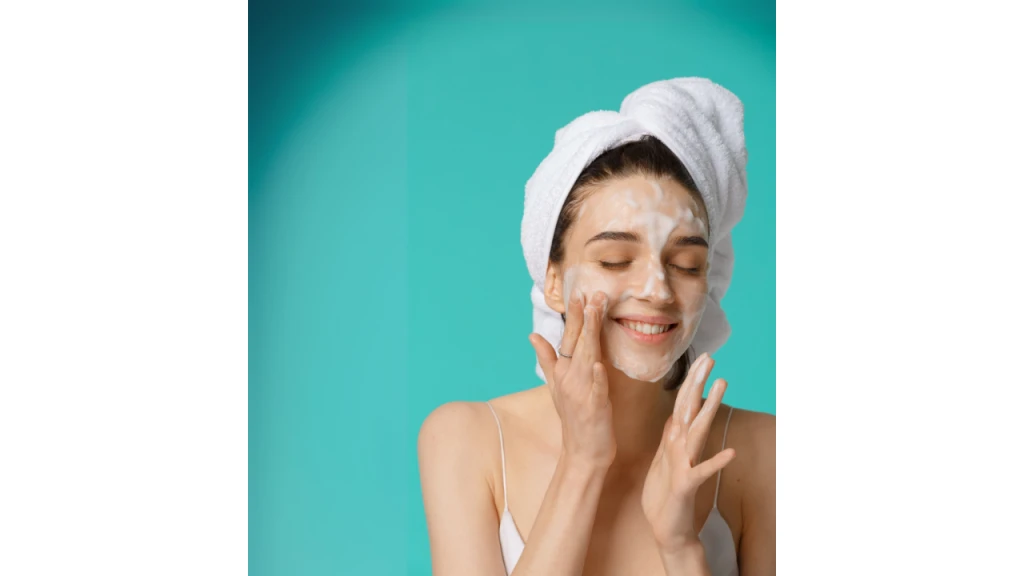
You can take proactive steps to support your skin through the healing process.
If you’re looking to speed up the healing process, there are a few practical steps you can take to support your skin’s recovery. Consistency and gentle care are key.
Gentle Cleansing
Washing your face twice a day with a mild, non-comedogenic cleanser keeps your skin clean without stripping it of its natural oils. This reduces the risk of further irritation and allows your skin to heal more efficiently.
Avoid Picking
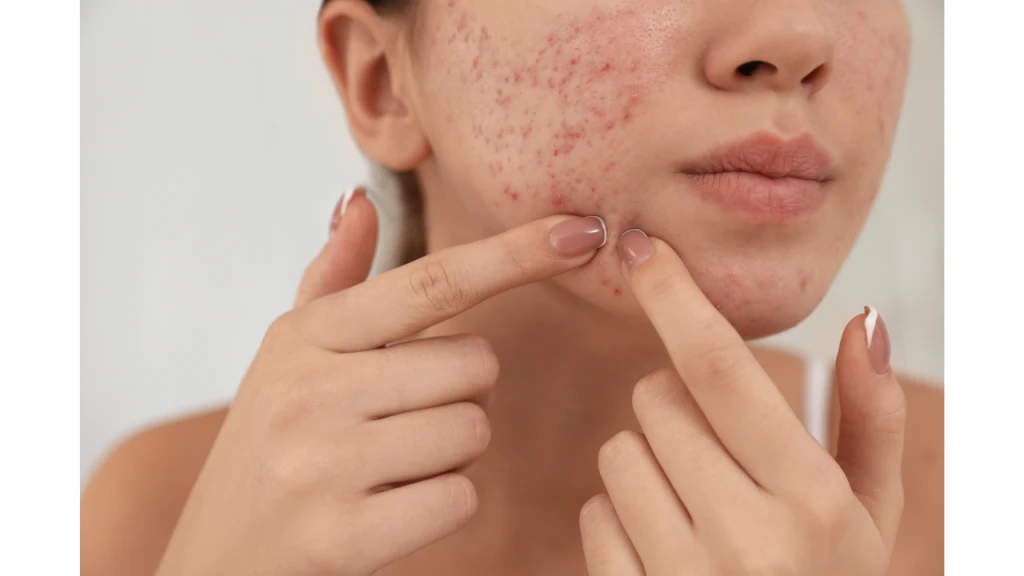
As tempting as it is to pop or pick at a pimple, it’s best to leave it alone. Picking increases the likelihood of inflammation, infection, and scarring, and in some cases, it can cause permanent damage to your skin.
Instead, apply a warm compress to the area to encourage natural drainage.
Ice Packs
Using ice can quickly calm an inflamed pimple. Wrap a small ice cube in a clean cloth and press it gently against the affected area for three to four minutes at a time. This reduces swelling and can soothe redness.
Topical Treatments
Certain treatments can aid in calming irritation and accelerating healing:
- Tea Tree Oil: Known for its mild antibacterial properties, it can help target acne-causing bacteria.
- Aloe Vera: This natural ingredient is great for soothing inflammation while also hydrating your skin.
- Ice Packs for acne: If you prefer not to use topical products, applying ice regularly can also reduce swelling and promote faster healing.
Adopt A Healthy Lifestyle
Healthy skin starts from within. By making small changes to your daily habits, you can support your skin’s ability to heal itself.
- Balanced Diet: Eating plenty of fruits, vegetables, and whole grains provides your skin with the nutrients it needs to repair.
- Hydration: Drinking enough water keeps your skin hydrated, making it better equipped to heal.
- Adequate Sleep: Quality rest—about seven to nine hours per night—gives your skin time to recover and renew.
- Stress Management: Stress can worsen acne and slow healing, so activities like meditation, yoga, or even a simple breathing exercise can help.
When to See a Dermatologist
Sometimes, pimples need more than home remedies to heal effectively. If your breakouts are severe, persistent, or causing long-term damage, it’s time to seek professional advice.
A dermatologist can provide tailored solutions to get your skin back on track.
- Severe or Persistent Acne: If your acne is widespread, painful, or doesn’t seem to improve, a dermatologist can help address underlying causes.
- Signs of Infection: Pimples that are red, warm, or filled with pus that keeps returning may indicate an infection requiring medical treatment.
- Scarring: If your acne is leaving scars or dark marks that aren’t fading, professional care can help minimize damage and improve skin texture.
- Lack of Response to Home Remedies: When over-the-counter treatments fail to make a difference, it’s worth exploring prescription options or in-office procedures.
Professional Treatment Options
Dermatologists offer a range of advanced treatments designed to target stubborn or severe acne. These options can make a significant difference in how your skin heals and recovers.
- Prescription Medications: Retinoids can unclog pores and improve cell turnover, while antibiotics target inflammation and bacteria. Hormonal therapies, such as birth control pills or spironolactone, can balance hormone-related acne.
- Chemical Peels: These treatments exfoliate the skin, reducing acne and improving the appearance of scars or dark spots.
- Laser Therapy: Targeted light energy can reduce acne-causing bacteria and improve skin texture while minimizing scarring.
- Extractions: For deeply clogged pores or stubborn pimples, a dermatologist can safely extract them to prevent further irritation or scarring.
Conclusion
The pimple healing journey takes patience, but understanding the process can help you feel more in control. With the right care and a little time, your skin can recover and look its best.
Remember to embrace a consistent skincare routine and prioritize overall health for long-term results. If you’re struggling with persistent or severe acne, reach out to a dermatologist for personalized guidance.

